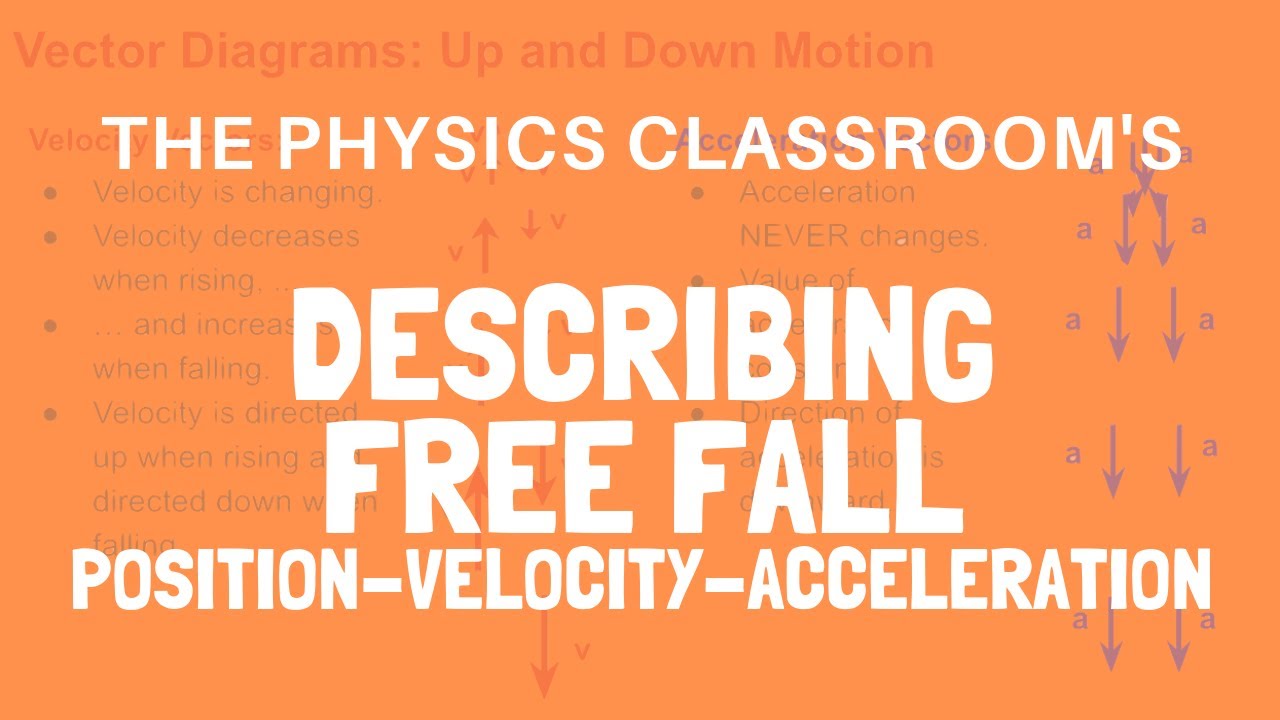AP Physics C: Kinematics Review (Mechanics)
Summary
TLDRThis AP Physics C: Mechanics review session covers foundational concepts in kinematics, including velocity, acceleration, and free fall. Mr. P guides students through key topics such as vectors versus scalars, uniformly accelerated motion, and projectile motion, with a focus on the proper use of equations and units. The class also emphasizes the importance of breaking down complex problems, including component vectors and relative velocity, while providing practical examples for better understanding. Through engaging student participation and problem-solving, this session offers a comprehensive overview of essential physics concepts for the AP exam.
Takeaways
- 😀 Units are crucial in physics. Always include units in answers, and remember to convert between units when necessary (e.g., from grams per cubic centimeter to kilograms per cubic meter).
- 😀 Vectors have both magnitude and direction, while scalars only have magnitude. This difference is critical in AP Physics problems, especially when dealing with momentum and other vector quantities.
- 😀 Average velocity is the change in position divided by change in time, whereas instantaneous velocity is the derivative of position with respect to time.
- 😀 Average acceleration is the change in velocity divided by the change in time, and instantaneous acceleration is the derivative of velocity with respect to time.
- 😀 Uniformly Accelerated Motion (UAM) applies when acceleration is constant. Key variables include acceleration, initial and final velocity, displacement, and time.
- 😀 UAM equations help solve for unknowns when acceleration is constant. Remember that the AP Physics equation sheet includes specific equations for velocity and displacement as functions of time.
- 😀 In free fall, the only force acting on an object is gravity. The acceleration due to gravity is -9.81 m/s² on Earth, and this is a type of uniformly accelerated motion.
- 😀 Graphing the motion of an object in free fall involves understanding how position, velocity, and acceleration vary with time. Acceleration is constant, while velocity and position change in a predictable manner.
- 😀 Component vectors are used to break down a vector into its x, y, and possibly z components. Trigonometric functions (sine and cosine) are used to calculate these components based on the angle of the vector.
- 😀 Relative velocity is the vector sum of velocities. For example, to fly a plane due north relative to the Earth in a wind blowing east, you must account for both the plane's velocity and the wind's velocity in a vector addition diagram.
- 😀 In projectile motion, separate the motion into x and y components. In the x-direction, the velocity is constant (no acceleration), while in the y-direction, the object undergoes free fall, experiencing constant acceleration due to gravity.
Q & A
What is the key difference between a vector and a scalar?
-A vector has both magnitude and direction, while a scalar has only magnitude. This distinction is crucial in physics, particularly in problems involving momentum or displacement.
What does the 'naught' or 'zero' subscript represent in kinematics equations?
-'Naught' or 'zero' indicates the initial value of a quantity, such as initial velocity (v₀) or initial time (t₀). For example, v₀ represents the velocity of an object at time t = 0.
Why is it important to use correct units when solving physics problems?
-Using correct units ensures that the calculations are consistent and accurate. It also helps in identifying errors, such as forgetting to square or cube a unit during conversion.
How do you convert the density of krypton gas from grams per cubic centimeter to kilograms per cubic meter?
-To convert, multiply by 100 centimeters per meter (cubed) to cancel out the cubic centimeters, and divide by 1000 grams per kilogram to cancel out grams. The final result is 3,750 kilograms per cubic meter.
What is the difference between average and instantaneous velocity?
-Average velocity is the total displacement divided by total time, while instantaneous velocity is the rate of change of position at a specific point in time, often calculated as the derivative of position with respect to time.
What are the five variables involved in uniformly accelerated motion (UAM)?
-The five UAM variables are acceleration, final velocity, initial velocity, displacement, and change in time.
What does the term 'free fall' mean in physics?
-An object is in free fall if the only force acting on it is gravity, meaning there is no air resistance. The acceleration due to gravity is typically 9.81 m/s² downward.
How do you determine the acceleration components of a vector at an angle?
-To find the components, use trigonometric functions: the acceleration in the x-direction is calculated as the magnitude of the acceleration times the sine of the angle, and in the y-direction, it’s the magnitude times the cosine of the angle.
What role do unit vectors (i, j, k) play in vector addition?
-Unit vectors represent directions along the x, y, and z axes, respectively, and help simplify vector addition. When vectors are written in unit vector form, they can be easily added by summing the components in each direction.
How is relative velocity used to solve motion problems involving two objects moving in different directions?
-Relative velocity involves vector addition. For example, if a plane is flying north relative to Earth, and there’s wind blowing east, the plane must be flown in a northwest direction to counteract the eastward wind. The velocities of both the plane and wind are combined using vector addition.
Outlines

此内容仅限付费用户访问。 请升级后访问。
立即升级Mindmap

此内容仅限付费用户访问。 请升级后访问。
立即升级Keywords

此内容仅限付费用户访问。 请升级后访问。
立即升级Highlights

此内容仅限付费用户访问。 请升级后访问。
立即升级Transcripts

此内容仅限付费用户访问。 请升级后访问。
立即升级5.0 / 5 (0 votes)






